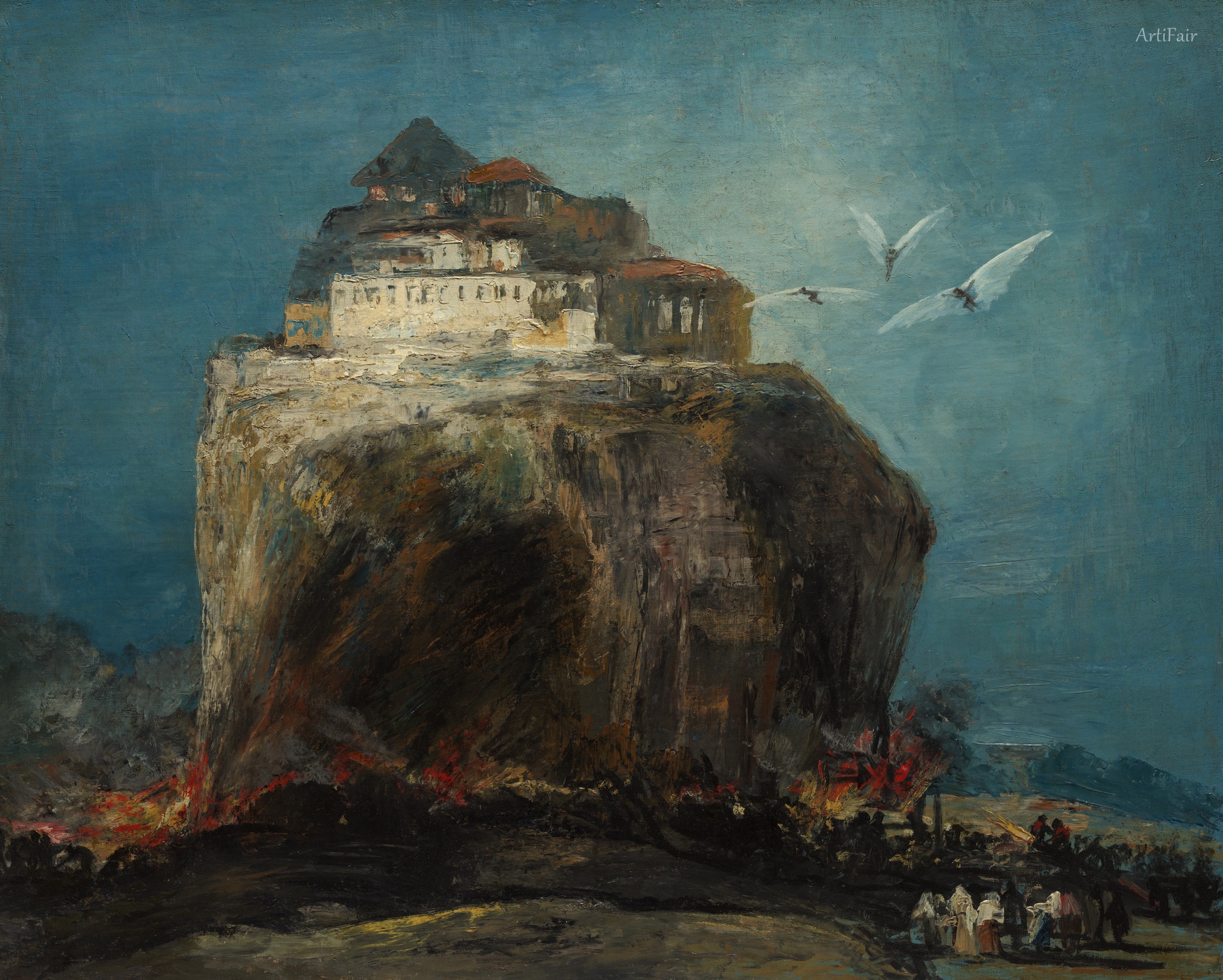
Art Appreciation
This evocative scene rests dramatically atop a colossal rock formation, where a cluster of buildings clings precariously to the stone, bathed in brooding, muted tones of earth and sky. The paint application is thick and masterful, with Goya's hallmark loose brushwork capturing the raw texture of the rock and the roughness of the architecture. A twilight atmosphere dominates, with a smoky, almost ghostly haze enveloping the base, where shadowed figures gather in an ambiguous assembly that hints at ritual or communal tension. The sky, a deep dusk-blue, contrasts with the faint, ghostly flight of three white birds, their wings stretching wide—perhaps symbolizing escape or hope. This interplay of light and shadow, solidity and air, creates a charged, almost mystical aura that both isolates and monumentalizes the city above.
The palette, sombre yet rich, accents the rocky city with ochres, umbers, and hints of burning reds at the base, suggesting fire or turmoil beneath this fragile urban perch. The composition beautifully balances the overwhelming mass of the rock with the delicate, almost poetic movement of the birds, grounding the painting in a moment of tension between earth and sky. Historically, this painting echoes the turmoil of Goya's time—social unrest, the threat of destruction, yet the stubborn endurance of life and civilization isolated on a bastion. The emotional pull is immediate and profound, drawing the viewer into a contemplative mood of awe and unease, making the city on this rock both a fortress and a fragile sanctuary.